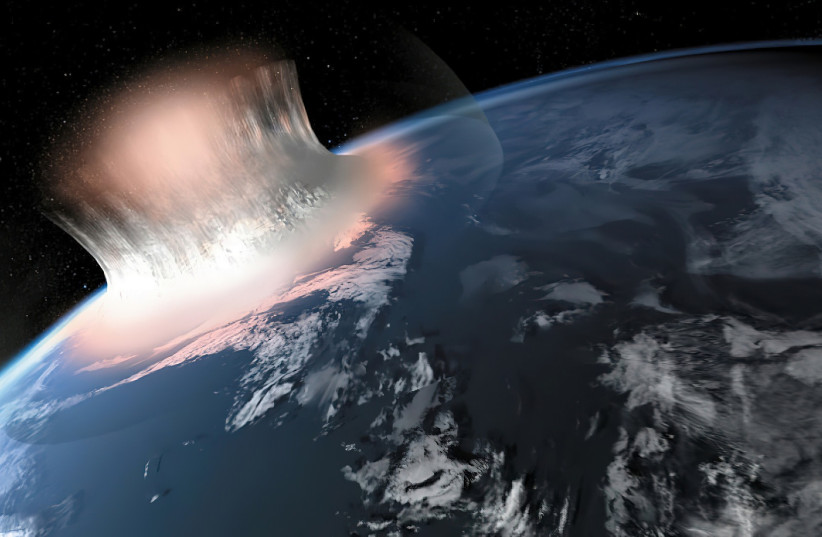An asteroid possibly around the size of the Space Needle is heading in Earth's direction at the beginning of 2022, in what is set to be the first relatively close flyby of a large asteroid of the new year, according to NASA's asteroid tracker.
Designated 2013 YD48, this asteroid has an estimated diameter ranging between 80 meters to 180 meters, making it, at its maximum estimated size, comparable to the Space Needle.
Currently orbiting at around 14.81 kilometers per second, the asteroid is set to fly past the Earth on January 12 at a distance of around 5.59 million kilometers away from Earth. For comparison, the Moon is around 384,000 meters away from the Earth. As such, it is unlikely that this asteroid would hit the planet.
This is in line with previous predictions by NASA, who stated that the Earth was at no risk of an asteroid impact for the next century.
However, if Earth wasn't fortunate enough to avoid a collision with the 2013 YD48, it could do serious damage to the planet.

According to NASA, any asteroid 140 meters in diameter or larger could have a potentially catastrophic impact if it crashed into Earth.
According to research from the Davidson Institute of Science, the educational arm of Israel's Weizmann Institute of Science, an asteroid over 140 meters in size would release an amount of energy at least a thousand times greater than the energy released by the first atomic bomb if it impacted Earth. Something even larger – over 300 meters wide like the asteroid Apophis – could destroy an entire continent.
And an asteroid over a kilometer in size could trigger worldwide cataclysms.
The Tunguska River asteroid
The last time an asteroid struck the planet was in 2013 in Russia when a 17-meter asteroid exploded in the atmosphere.
The last impact from an asteroid this big was in 1908 above the Podkamennaya Tunguska River in Russia, in what has now become known as the Tunguska event.
When the asteroid estimated to have been around 190 meters wide exploded in the air several kilometers above the area, it produced a massive 12 megaton explosion, causing widespread destruction for thousands of kilometers. That would make it about 800 times more powerful than "Little Boy," the approximately 15-kiloton atomic bomb detonated during World War II over Hiroshima, and 600 times more than "Fat Man," the 20-kiloton one detonated over Nagasaki three days later.
The death toll from the Tunguska event was extremely low, however, with only around three people thought to have been killed in it, due to how remote and sparsely populated the region was. But the damage was still evident, with about 80 million trees completely flattened, winds of around 27 km., a second bursting around and a loud noise heard far and wide. Tremors and airwaves were felt as far away as even Washington and Indonesia.
The few eyewitness accounts that do exist recounted the terrifying explosion, strong winds, tremors and incredibly loud noises.
The Tunguska event is the largest in recorded history – though larger prehistoric ones happened – and is one of the largest explosions ever recorded, far more powerful than many nuclear bombs.
The destructive nature of asteroids, even small ones, is something well-known to experts, with space agencies around the world monitoring for potential catastrophic impacts, as well as researching potential means of stopping them.
But asteroids routinely flying near Earth's orbit is also a benefit, as they present ideal opportunities for exploration and, in the future, exploitation by mining.
Many asteroids are teeming with valuable minerals like iron, nickel and more. As such, they represent ideal targets for mining, something that until now has been one of the most severe sources of pollution and environmental destruction on Earth.
Whether 2013 YD48 is one such asteroid is unclear, though, and time will tell before we are able to properly ascertain its composition.
